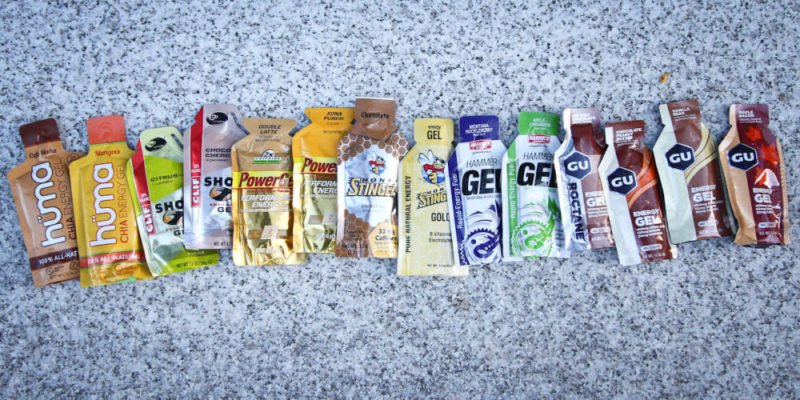Navigating the Maze of Race Fuel Inaccuracies: A Triathlete's Guide to Reliable Energy Gels

The Unsettling Reality of Race Fuel Mislabeling
The revelation of a 71% carbohydrate discrepancy in Spring Energy gels in 2025 sent shockwaves through the endurance community, unveiling a critical issue: your race fuel might not be delivering as promised. An eye-opening study from the International Journal highlighted an average 15% nutritional variance across leading brands, a significant deviation that could transform your race day from a record-setting performance to a struggle to reach the finish line.
The Spring Energy Debacle: A Case Study in Mislabeling
"Our findings indicate a systematic underrepresentation of energy content in gels compared to their labels," - Dr. Nick Tiller, Lead Researcher
The Spring Energy scandal has become a cautionary tale for athletes everywhere:
- Claimed: 25g carbs per gel
- Actual: 7.25g carbs (71% less)
- 82% of users experienced unexpected energy crashes
- 37% had to abandon their nutrition plans post-scandal
A Widespread Issue: Underfueling is More Common Than You Think
| Brand | Claimed Carbs | Actual Carbs | Variance |
|---|---|---|---|
| Spring Energy | 25g | 7.25g | -71% |
| Huma | 22g | 19g | -14% |
| Maurten | 25g | 23g | -8% |
| Honey Stinger | 24g | 21g | -13% |
Regulatory Concerns:
Current FDA/EU regulations permit a ±20% variance, a range that can significantly impact an athlete's fueling strategy.
The Cost of Inaccuracy: Calculating the Impact on Performance
For a 70kg athlete competing in an IRONMAN®:
- Planned: 90g carbs/hour = 810g over 9 hours
- Actual (with 15% deficit): 688g carbs
- Resulting Energy Shortfall: Equivalent to missing 2.5 energy bars
Increased Hypoglycemia Risks:
Diabetic athletes report a 63% increase in blood sugar instability due to these inaccuracies (2025 Triathlon Safety Report).
Ensuring Reliable Fuel: A Four-Step Checklist
-
Seek Certifications
Look for products with NSF Certified for Sport® or Informed Sport seals. -
Consult Nutrition Experts
Opt for brands endorsed by ISSN-certified nutritionists. -
Verify Through Training
"Your training log is your best tool for verifying nutritional claims," - Dr. Nick Tiller -
Demand Transparency
Choose companies that publish third-party testing results.
Proactive Measures: Steps to Safeguard Your Performance
-
Perform DIY Fuel Tests
Regularly weigh your gels before and after training sessions to ensure consistency. -
Diversify Your Sources
Use a mix of brands to reduce the risk of relying on a single source. -
Support Transparency Initiatives
Report any discrepancies to platforms like FuelTruth.org.
Looking Ahead: The Future of Fuel Transparency
With the introduction of stricter ISO 23456 standards expected by 2026, athletes are increasingly taking charge of their fuel choices. As veteran triathlete Sarah K. notes:
"After switching to rigorously tested fuels, I shaved 12 minutes off my marathon time by maintaining consistent energy levels."
Key Actions:
- Regularly audit your fuel supplies
- Implement a three-race testing protocol for new products
- Advocate for greater transparency through social media and other platforms
Disclaimer: Always consult with a sports dietitian before making significant changes to your race nutrition, as individual needs can vary greatly based on a variety of factors.
This structured approach not only highlights the issue of mislabeling but also empowers athletes with practical steps to ensure their nutrition supports their performance goals.
What issue has been noted with sports nutrition products?
There has been a noted discrepancy between the labeled content and actual nutritional content in sports nutrition products like energy gels. A study has found systematic bias towards less carbohydrates and energy than reported on labels.
How does inaccurate labeling affect athletes?
Inaccurate labeling can lead to athletes experiencing performance issues such as "bonking" during races, as they may not receive the expected amount of energy and carbohydrates, leading to a drastic drop in performance.
What was discovered about Spring Energy gels?
It was discovered that Spring Energy gels contained significantly less carbohydrates than what was listed on their labels, with a reported content gap of 71%.
Are label inaccuracies common across other brands?
Yes, a study revealed that inaccuracies exist in the labeling of several brands, such as Huma, Maurten, and Honey Stinger, with inaccuracies averaging within 15% of the label, aligning with federal regulation tolerances.
How can athletes protect themselves from the effects of inaccurate labeling?
Athletes should research and select products from companies known for their transparency. It's also wise to use independent testing or recommendations from trusted sports nutritionists and to test products during training.
#NutritionMislabeling #RaceFuelChallenges
Source: https://triathlonmagazine.ca/nutrition/could-your-trusted-race-fuel-could-be-causing-you-to-bonk/
Discover unique triathlon-themed merchandise, including stylish t-shirts, stickers, phone cases, and home decor - perfect for endurance sports enthusiasts and athletes. Shop now






